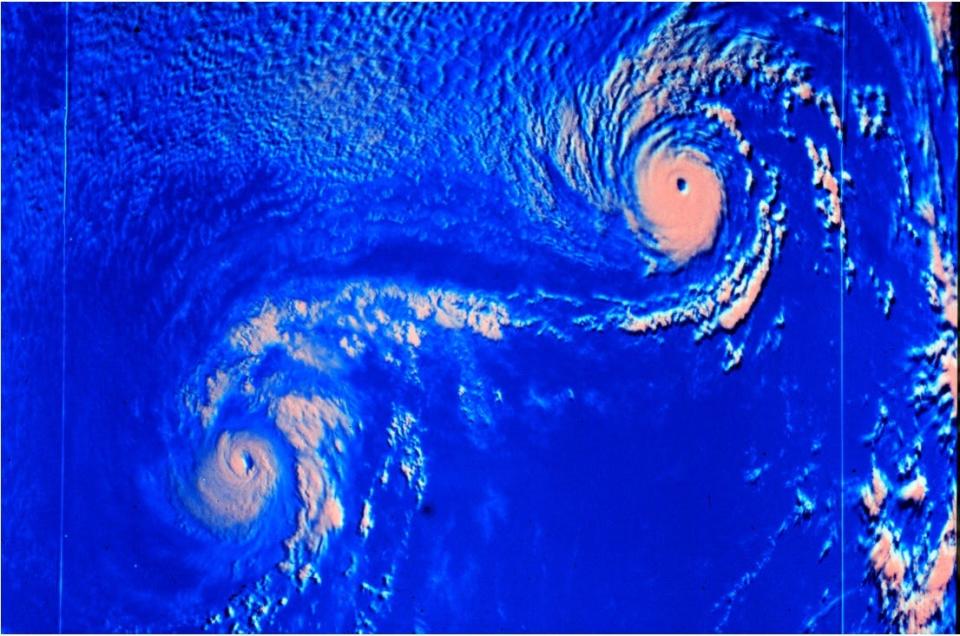Why could Helene trigger massive rainfall inland? Blame the Fujiwhara effect
The Fujiwhara effect – which describes the rotation of two storms around each other – is one of meteorology's most exquisite dances. It's most common with tropical cyclones such as typhoons or hurricanes, but it also occurs in other cases.
Forecasters say soon-to-be Hurricane Helene could undergo a Fujiwhara "interaction" with another storm over the south-central U.S., which the weather service refers to as a trough of low pressure ? and that could mean a deluge of flooding rainfall inland across many states far from the storm's center.
As Helene moves across Florida into the Southeast, "models suggest it will undergo a Fujiwhara interaction with a trough of low pressure over the Ozarks," the National Weather Service in Shreveport, Louisiana, said in an online forecast discussion posted Monday.
"Essentially, this means the remnants of the landfalling hurricane will move in close proximity of the larger Ozarks trough, and then try to circulate around it before it gets absorbed forming a larger closed trough," the weather service said.
"This phenomenon is incredibly rare at this latitude!," posted KATV meteorologist James Bryant on X.
Flooding rain possible
The storms will interact to produce heavy, potentially flooding rain across portions of the Mid-South and Ohio Valley over the next several days, forecasters said.
"Heavy to excessive (flooding) rain is expected from the Florida Gulf Coast to the Tennessee Valley and southern Appalachians," the weather service in Little Rock, Arkansas, said. "Some areas could receive more than a half foot of precipitation. Farther west, the forecast calls for two to more than three inches of rain in northern Arkansas."

Latest on Helene: Florida bracing for major hurricane hit
What is the Fujiwhara effect?
When two hurricanes spinning in the same direction pass close enough to each other, they begin an intense dance around their common center known as the Fujiwhara effect, the National Weather Service said.
The effect is thought to occur when storms get about 900 miles apart.
Storms involved in the Fujiwhara effect are rotating around one another as if they had locked arms and were square dancing. Rather than each storm spinning about the other, they are actually moving about a central point between them, as if both were tied to the same post and each swung around it separately of the other.

A good way to picture this is to think of two ice skaters who skate quickly toward each other, nearly on a collision course, grab hands as they are about to pass and spin vigorously around in one big circle with their joined hands at the center.
The effect is named after Dr. Sakuhei Fujiwhara who was the chief of the Central Meteorological Bureau in Tokyo, Japan, shortly after the First World War. In 1921, he wrote a paper describing the motions of "vortices" in water. Water vortices, such as whirlpools, are little water whirls that spin around.
This article originally appeared on USA TODAY: Fujiwhara effect: Hurricane Helene could undergo this rainfall dance
Solve the daily Crossword

